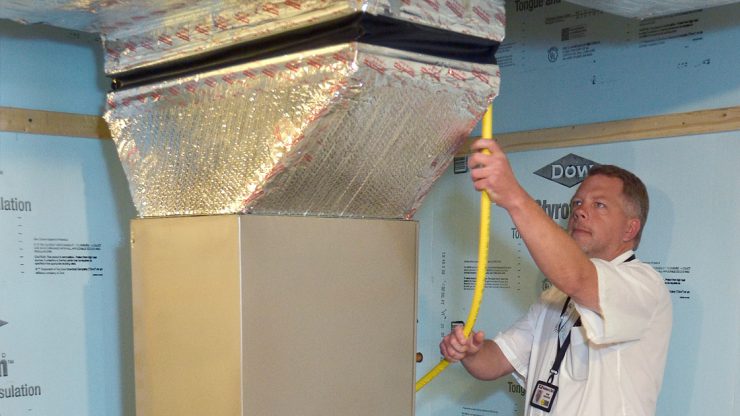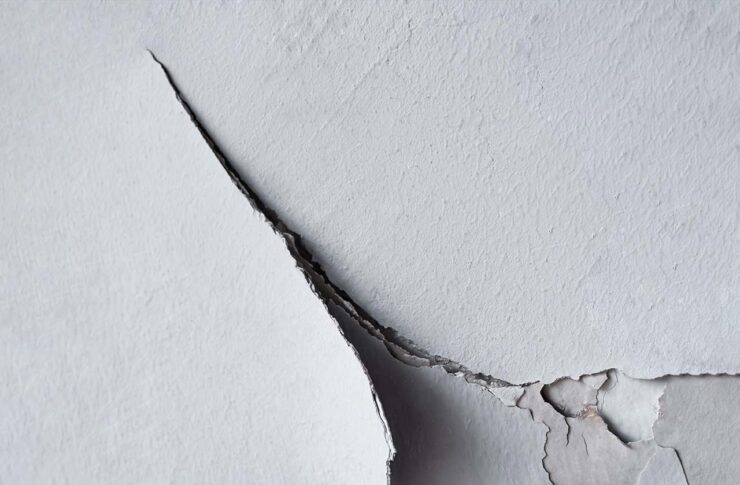How to Know if the Air in Your House is Too Dry
May 7, 2019In our quest for year-round home comfort, we often face a common yet overlooked challenge: maintaining optimal indoor humidity levels. Whether it’s warding off the chill with a furnace in winter or seeking respite from summer’s heat with air conditioning, such efforts can unwittingly lead to an imbalance in your home’s humidity.
Comfortable though they may be, these systems can contribute to a pervasive dryness in the air—a problem that doesn’t limit itself to any one season and can have varied dry air symptoms. From an increase in static electricity to the impact on skin and respiratory health, we’ll guide you through recognizing the signs that your living space may need a humidity adjustment.
-
Battling Static: A Shocking Sign of Dry Air
Have you ever shuffled across the carpet only to receive a sharp snap when reaching for a doorknob? Static electricity isn’t just a minor annoyance; it’s a tangible sign that the air in your home may be excessively dry. This electrical charge builds up when there’s a lack of moisture to conduct and neutralize static buildup.
If you find yourself dodging these little zaps regularly, especially during the winter months when heaters are working overtime, it could signal that it’s time to assess and address your indoor humidity levels. Not only can static electricity be a nuisance, but it can also pose a risk to sensitive electronics in your home.
Here are 2 things you should know about indoor air quality and what you can do about it!

-
Breathing Challenges: The Hidden Cost of Dry Air
Persistent dry air in your home doesn’t just affect comfort—it can significantly impact respiratory health. Residents often experience symptoms reminiscent of a cold, such as a dry throat and a stuffy nose, particularly upon waking. These symptoms are not only uncomfortable but can exacerbate respiratory issues over time. Regular occurrences of breathing difficulties might be a direct result of insufficient indoor humidity.

Maintaining an optimal moisture level becomes essential, not just for comfort but for the health of everyone in your household. Consider monitoring your home’s humidity levels to ensure they remain within a healthy range.
-
Combatting Dryness: Protect Your Skin and Lips from Low Humidity
Dry air’s reach extends beyond the discomfort of morning symptoms—it can persistently deplete your skin and lips of essential moisture throughout the day. If you find yourself reaching for the lip balm or moisturizer more frequently, it’s worth considering whether your home’s humidity levels are to blame.
Prolonged exposure to dry environments can lead to skin irritation and exacerbate conditions like eczema or psoriasis. Ensuring your home is properly humidified can protect your skin’s natural barrier, keeping it hydrated and resilient against the arid assault of unbalanced indoor air.
-
Preserving Your Home’s Integrity Against Dry Air
Low humidity can be a silent adversary to the integrity of your home’s interior. You might first notice its presence when hardwood floors begin to creak more than usual, or when fine lines fracture the once-smooth surface of your walls’ paint.

These symptoms point to a deficiency in ambient moisture that, over time, can cause significant damage to woodwork and painted surfaces. Consistent levels of indoor humidity are crucial for preserving the longevity and aesthetics of these materials. To prevent these subtle yet insidious effects of dry air, consider implementing a whole-house humidification system or other humidity-regulating solutions.
Navigating the Health Impacts of Dry Air and Low Humidity
While the immediate effects of dry indoor air can be mildly bothersome, it’s the long-term health implications that merit serious attention. The root of household dryness often lies in over-reliance on central heating systems and inadequate insulation, which strip away the humidity essential for maintaining health and comfort.
From aggravating asthma symptoms to fostering an environment conducive to viruses, the ramifications of low humidity are extensive. Moreover, an overly dry atmosphere can deteriorate the quality of indoor plants and furniture, manifesting in a less vibrant living space. Understanding and addressing these side effects can transform your home into a sanctuary of wellness, safeguarding your family’s health and well-being.
- Maintaining Mucous Membrane Health Year-Round: A robust mucous membrane is your body’s frontline defense against respiratory infections. In the face of persistently dry air, this protective barrier may weaken, increasing susceptibility to colds, the flu, and other infections—ailments not confined to the colder months. In fact, studies suggest that dry indoor environments could prolong the life of flu viruses, underscoring the importance of managing humidity levels throughout the year.
- Beyond “Winter Itch”: The Perpetual Battle for Skin Hydration: Commonly dubbed “winter itch,” the discomfort of dry, itchy skin due to low moisture levels is not a seasonal phenomenon alone. When your indoor air lacks humidity, your skin can become parched and susceptible to irritation any time of year. Cracked skin not only causes discomfort but also creates gateways for pathogens to enter the body, heightening infection risks.
- Preventing Nosebleeds and Protecting Overall Well-being: Furthermore, dry air is a well-known culprit in triggering nosebleeds, which can be a regular concern for many. By ensuring that your home maintains an ideal humidity level, you can protect yourself and your loved ones from these and other symptoms. For a holistic approach to balancing your home’s climate, consider exploring humidification solutions that cater to diverse needs and seasonal shifts.
Optimizing Indoor Humidity: Simple Steps for Year-Round Comfort
Balancing your home’s humidity is essential for health and comfort, and monitoring it is easier than you might think. A hygrometer is a handy tool that gauges moisture levels, helping ensure they’re within the ideal range of 30 to 50 percent. Should levels fall below this range, introducing a humidifier can alleviate dryness, while levels above might require the use of a dehumidifier to prevent mold and bacterial growth. With today’s smart home technology, you can even find devices that automatically adjust the humidity based on real-time readings, taking the guesswork out of maintaining your indoor climate. Discover the full array of humidity control options we offer and find the perfect fit for your home here.
Eco-Friendly Humidity Hacks for Any Season
Elevating the humidity in your home doesn’t always require high-tech equipment. Simple, natural methods can also contribute to a more balanced indoor atmosphere. Start with eco-friendly solutions like strategically placed bowls of water that naturally evaporate, adding moisture to the air. Pay attention to the rate of evaporation — it can indicate when it’s time to consider a more permanent solution, such as a humidifier, for comprehensive humidity management.
Here are more sustainable ways to increase moisture in your indoor environment:
- Introduce indoor plants known for their air-purifying and humidifying abilities; remember, they need regular misting.
- Simmer water on the stove with a drop of your favorite essential oils to add both humidity and a pleasant aroma to your home.
- Keep the bathroom door open during showers to let steam disperse throughout the house.
- Air-dry laundry inside, especially on dry days; it’s both energy-saving and moisture-adding.
- Utilize natural humidifiers like damp sponges placed in a bowl, which can gradually release moisture into the air.
Regularly employing these methods can mitigate the effects of dry air, but for optimal comfort and health, especially in extreme climates.
Take Control of Your Indoor Climate Today
Don’t let the discomfort of dry air linger in your home. With Summers & Zim’s expert services, you can reclaim your comfort in every season.
Schedule a comprehensive home performance test with us and explore customized solutions that breathe life back into your living spaces. From modern humidifiers to whole-home systems, we have the tools to ensure your air is perfectly balanced.
Ready to transform your indoor air quality? Get in touch with our specialists now and take the first step towards a healthier, more comfortable home.

